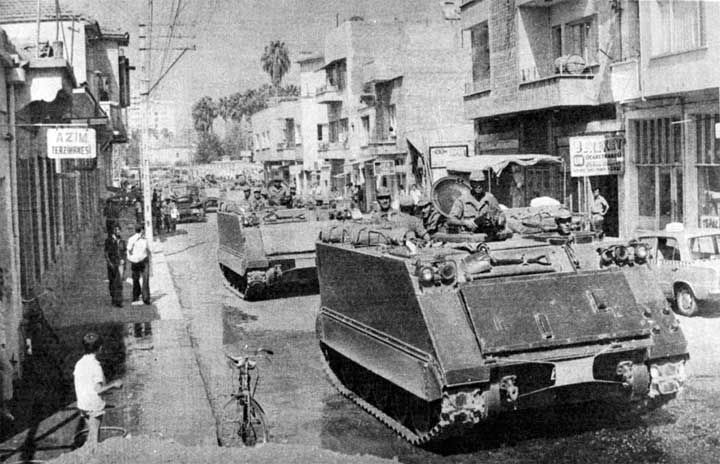1974 Cyprus Divided

Turkish Soldier in Cyprus
On July 15th 1974 the Cypriot National Guard with the support of the Greek military staged a coup in Cyprus, ousting Cypriot President Makarios III. Makarios was replaced by Nikos Sampson who was a Greek nationalist. In response the Turks invaded the island five day later. They eventually conquered 40% of the island. Cyprus has remained divided ever since..
In the early 1970s, the political situation in Cyprus deteriorated, with the Greek Cypriot government, led by Archbishop Makarios III, facing opposition from Greek nationalist elements, including EOKA-B, a paramilitary organization. The Greek junta perceived Makarios as an obstacle to enosis and began planning a coup to oust him.
The Coup and Turkish Invasion: On July 15, 1974, the Greek military junta, in collaboration with EOKA-B, orchestrated a coup d'état against President Makarios, who managed to escape to the United Kingdom. Nikos Sampson, a Greek Cypriot nationalist, was installed as the new president. The coup triggered international condemnation and ultimately led to the collapse of the Greek junta on July 23, 1974.
The coup also prompted the Turkish government to intervene, citing the need to protect the Turkish Cypriot population. On July 20, 1974, Turkey launched a military operation, code-named "Atilla," and deployed forces to the northern part of the island. Despite a ceasefire brokered by the United Nations on July 22, 1974, the situation remained volatile, and a second Turkish military intervention took place on August 14, 1974. By the end of the second invasion, Turkey occupied nearly 37% of Cyprus's territory.
Consequences of the Crisis: The 1974 crisis had profound and lasting consequences for Cyprus and its people. The island was effectively divided along ethnic lines, with a ceasefire line, known as the Green Line, separating the Turkish-occupied north from the Greek Cypriot-controlled south. This division remains in place to this day, with the self-declared Turkish Republic of Northern Cyprus, recognized only by Turkey, in the north and the internationally recognized Republic of Cyprus in the south.
The crisis led to significant population displacement, with around 200,000 Greek Cypriots fleeing from the north to the south and approximately 50,000 Turkish Cypriots relocating to the north. The United Nations established a peacekeeping force, the United Nations Peacekeeping Force in Cyprus (UNFICYP)
 >
>